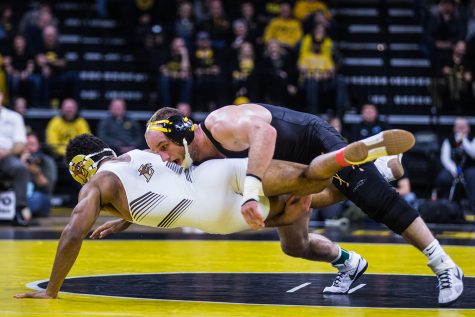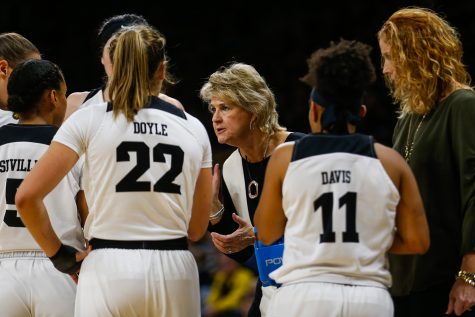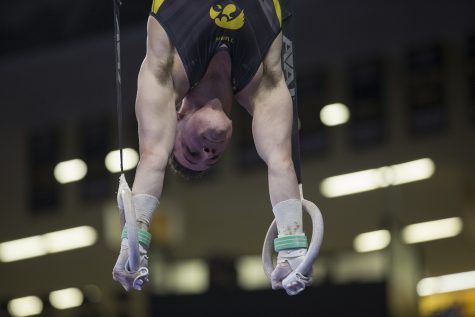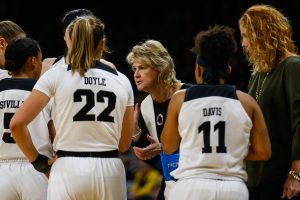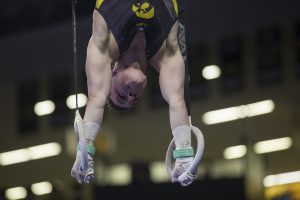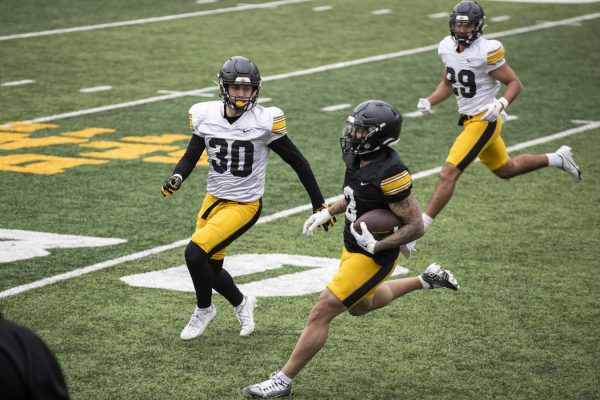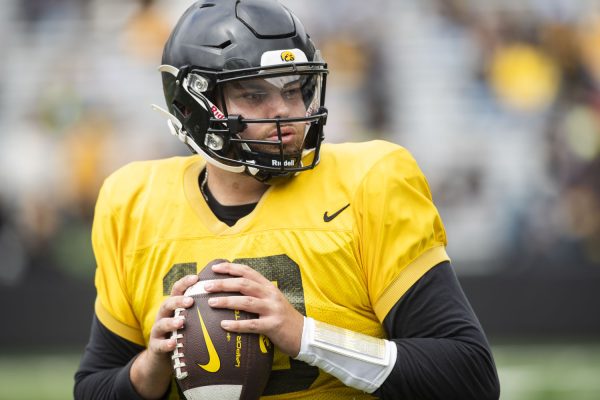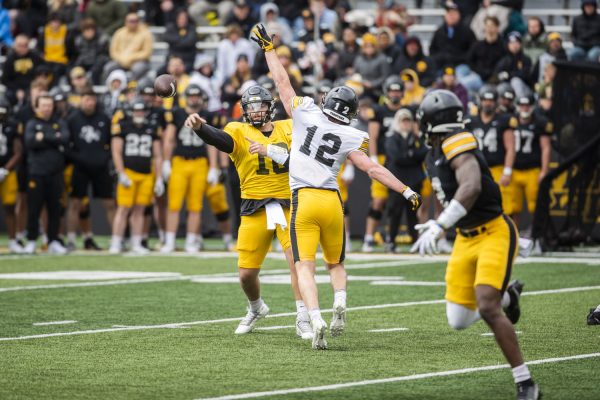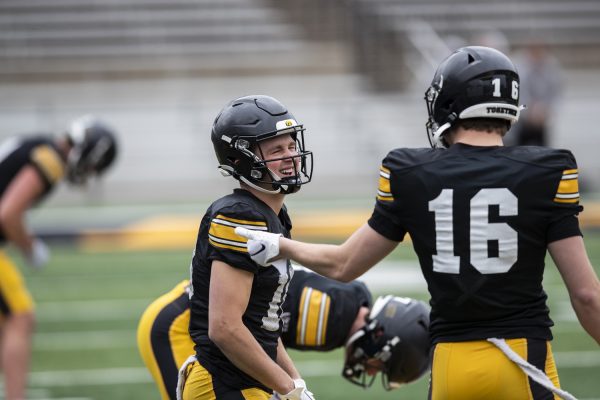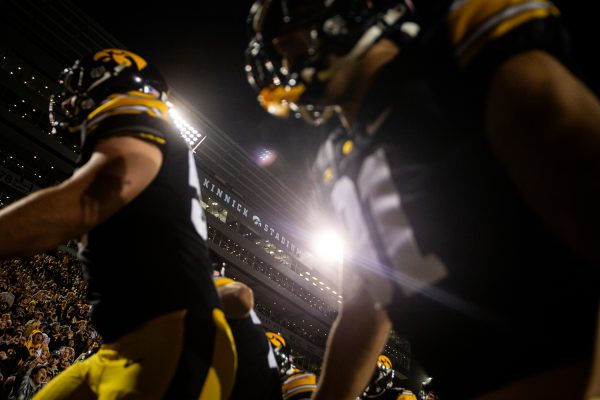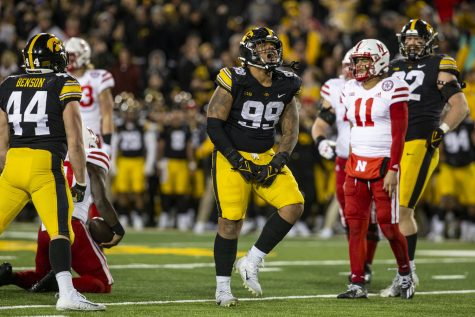Iowa football report card: Offensive line
The Hawkeye offensive line improved in the run game and pass protection, thanks to consistency in the lineup.
Iowa offensive lineman Keegan Render waits at the line of scrimmage during the Iowa/Maryland homecoming football game at Kinnick Stadium on Saturday, Oct. 20, 2018. The Hawkeyes defeated the Terrapins, 23-0.
December 11, 2018
Offensive Line: B
Death, taxes, and Iowa’s running game being effective. The Hawkeyes’ ground attack posted some impressive performances with a breakout game here and there, and it posted better numbers than it did in 2017.
After losing James Daniels, Ike Boettger, Sean Welsh, and Boone Myers, the offensive line was lacking in terms of on-field production and leadership in the locker room. Throw in three talented but inexperienced running backs, and it was essentially a tossup on how well Iowa would run the football.
It turned out to be pretty good, for the most part.
While the running game wasn’t as impressive as had been in 2015 or 2016, the 2018 Hawkeyes racked up 1,944 yards on the ground and 4.2 yards per carry, as opposed to 1,810 yards and 3.8 yards per last season.
What was even more impressive than the offensive line’s improvement in helping the running game chug along was its ability to keep quarterback Nate Stanley from going down.
In 2017, the Hawkeye front tied for 56th in the country, allowing 25 sacks through 13 games for an average of 1.92 a contest.
Iowa took a huge step forward in 2018. The Hawkeyes only gave up 13 sacks in 12 games, ranking 10th in the nation and first in the Big Ten. It came out to an average of 1.08 a game, which is almost a full sack fewer than the year before.
There was a lot less movement and rotating on the line than there was in 2017, and the consistency showed in the stats. Because there were minimal injuries, the core group of Alaric Jackson, Ross Reynolds, Keegan Render, Cole Banwart, and Tristan Wirfs gelled, allowing for solid production.
Banwart started Weeks 1 and 2 but didn’t play in Week 3. The Ottosen, Iowa, native didn’t get his starting spot back until Week 9, then finished the season in the lineup.
In his absence, Dalton Ferguson and Levi Paulsen were called upon, but even those changes didn’t affect the unit nearly as much as when things shifted in 2017.
The personnel in the run, however, was a complete reversal from what it was last season.
Akrum Wadley was the workhorse for the Hawkeyes on the ground and racked up 1,109 yards alone while working behind an injury-plagued offensive line that rotated all too often.
But this season, the line remained steady for the most part. The running backs were the ones rotating.
It’s also worth noting that when run blocking, the line blocked for three different backs, who all played with different styles.
Whether it was the powerful Toren Young, the shifty Ivory Kelly-Martin, or the do-it-all Mekhi Sargent, the Hawkeyes consistently made it work.
The improvement in pass protection led to Stanley throwing for 2,638 yards and 23 scores with a completion percentage of 58.6.
Under less pressure this season, those numbers were up from 2,437 yards and a 55.8 completion percentage in 2017.
It wasn’t perfect, but one thing is clear for the 2018 Iowa offensive line: Consistency was key.




